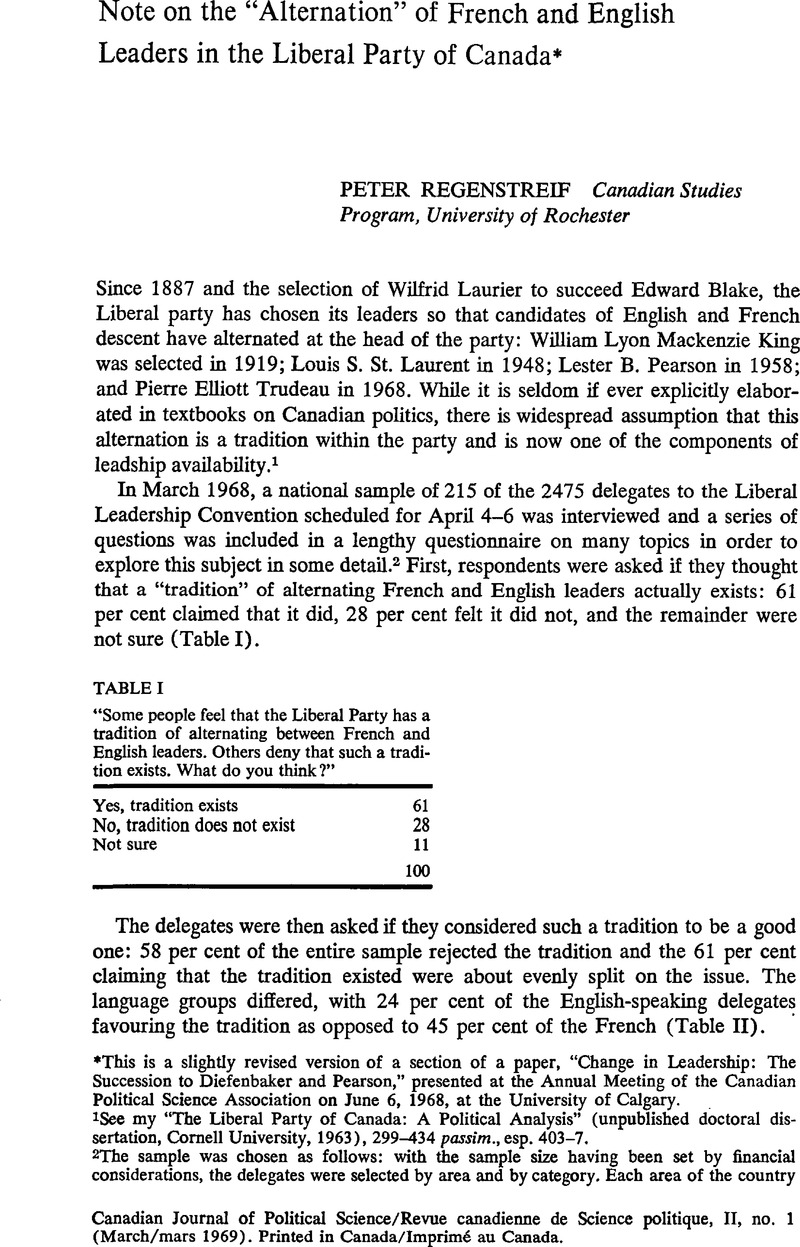Published online by Cambridge University Press: 10 November 2009

1 See my “The Liberal Party of Canada: A Political Analysis” (unpublished doctoral dissertation, Cornell University, 1963), 299–434 passim., esp. 403–7.
2 The sample was chosen as follows: with the sample size having been set by financial considerations, the delegates were selected by area and by category. Each area of the country was allocated its quota in the sample in proportion to its representation at the convention. Within each area, each category of delegate—MPs, MLAs, and defeated candidates; party executives; and constituency delegates—was given its quota in the sample: e.g., Manitoba's contingent at the convention was 6 per cent of the total number of delegates; accordingly, 6 per cent of the sample was chosen from Manitoba. The Manitoba section was further broken down as follows, conforming to the actual distribution of delegates by category: 25 per cent were MPs, MLAs, or defeated candidates; 25 per cent were party executives (University Liberals, Young Liberals, Women Liberals, provincial executives, etc.); and the remainder were chosen from among the constituency delegations.
Delegates in each area and category were numbered and random number tables were used to select the respondents. The market research firm of Canadian Facts Company Limited carried out the field work.
I would like to thank the Toronto Daily Star which commissioned the study.
3 Earlier in the interview, delegates were asked if they had a preference for leader and if so to name the candidate of their choice. The survey revealed the following first ballot preferences (in percentages).
